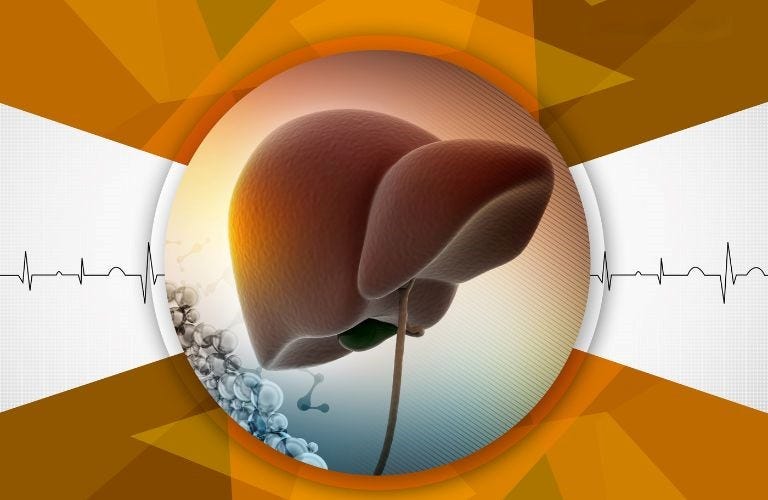The role of liver biopsies in diagnosing liver problems
Liver biopsies are a diagnostic tool used to identify liver problems. The liver is a vital organ in the body responsible for numerous functions, including the production of bile, the metabolism of nutrients, and the detoxification of harmful substances. A liver biopsy involves taking a small sample of liver tissue and examining it under a microscope to determine if there are any abnormalities or damage.
A liver biopsy may be recommended by the best liver specialist in Surat if a patient has an elevated level of liver enzymes in their blood, indicating that their liver is not functioning correctly. It can also be useful in diagnosing liver diseases such as cirrhosis, hepatitis, and fatty liver disease. In some cases, a liver biopsy can help determine the severity of liver disease and the potential for future complications.
During a liver biopsy, the best liver doctor in Surat will insert a thin needle into the liver and remove a small sample of tissue. The procedure can be done in a doctor’s office or a hospital under local anesthesia or conscious sedation. The patient may experience some discomfort or pain during the procedure, but it is generally well-tolerated.
After the biopsy, the liver tissue sample is examined by a pathologist to identify any abnormalities or damage. The results of the biopsy can help guide treatment decisions and monitor the progression of liver disease.
In summary, liver biopsies are an important tool for diagnosing liver problems and assessing the severity of liver disease. While it is an invasive procedure, it can provide valuable information that can guide treatment decisions and help monitor the progression of liver disease.
FAQ:
What is the role of liver biopsy?
A liver biopsy is a medical procedure in which a small piece of liver tissue is removed and examined under a microscope to evaluate the liver’s health and diagnose certain liver conditions.
The role of liver biopsy is to provide valuable information to the liver surgeon about the structure, function, and health of the liver. It is often used to diagnose and monitor liver diseases such as hepatitis, cirrhosis, and fatty liver disease. The biopsy can help determine the degree of liver damage, the severity of the disease, and the stage of progression.
What is the role of liver biopsy in chronic liver disease?
Liver biopsy is a useful tool in the diagnosis and management of chronic liver disease. The liver is a complex organ, and chronic liver diseases can have different causes, manifestations, and stages of progression. Liver biopsy can provide important information about the extent and nature of liver damage, the severity of the disease, and the likelihood of progression to liver failure or liver cancer.
What is the role of liver biopsy in nonalcoholic fatty liver disease?
Liver biopsy can play an important role in the diagnosis and management of nonalcoholic fatty liver disease (NAFLD), a common condition in which excess fat accumulates in the liver in the absence of significant alcohol consumption. NAFLD can progress to nonalcoholic steatohepatitis (NASH), a more severe form of the disease characterized by inflammation and liver cell injury, which can lead to cirrhosis and liver cancer.
What is the utility of liver biopsy in the evaluation of liver disease and abnormal liver function tests?
According to Dr. Dhaval Mangukiya, one of the best liver surgeon in Surat, the liver biopsy can be a valuable tool in the evaluation of liver disease and abnormal liver function tests, particularly when non-invasive tests such as imaging or blood tests are inconclusive or conflicting.
Here are some examples of how liver biopsy can be useful in this context:
- Diagnosis of liver disease: Liver biopsy can help diagnose liver diseases such as viral hepatitis, autoimmune hepatitis, primary biliary cholangitis, primary sclerosing cholangitis, Wilson’s disease, and others. In some cases, liver biopsy can also help identify rare or unusual liver diseases that may be difficult to diagnose by other means.
- Staging and prognosis of liver disease: Liver biopsy can provide information on the degree of liver inflammation, fibrosis, and cirrhosis, which are important predictors of disease progression and response to treatment. This information can guide clinical decisions such as the need for treatment, the choice of treatment, and the frequency of monitoring.
- Monitoring of liver disease: Liver biopsy can be used to monitor the progression of liver disease and the response to treatment over time. Repeat liver biopsies can provide valuable information on the rate of liver fibrosis or cirrhosis, which can help guide treatment decisions.
- Evaluation of unexplained liver function abnormalities: Liver biopsy may be considered in cases of unexplained liver function abnormalities or suspected liver disease in which non-invasive tests are inconclusive or conflicting. Liver biopsy can provide direct visualization of the liver tissue, allowing for a more accurate assessment of liver function and pathology.
However, liver biopsy is an invasive procedure and carries a small risk of complications such as bleeding or infection. The decision to perform a liver biopsy should be made in consultation at a hospital which specialises in performing best liver surgery in Surat, taking into account the potential risks and benefits for each individual patient.

Comments
Post a Comment